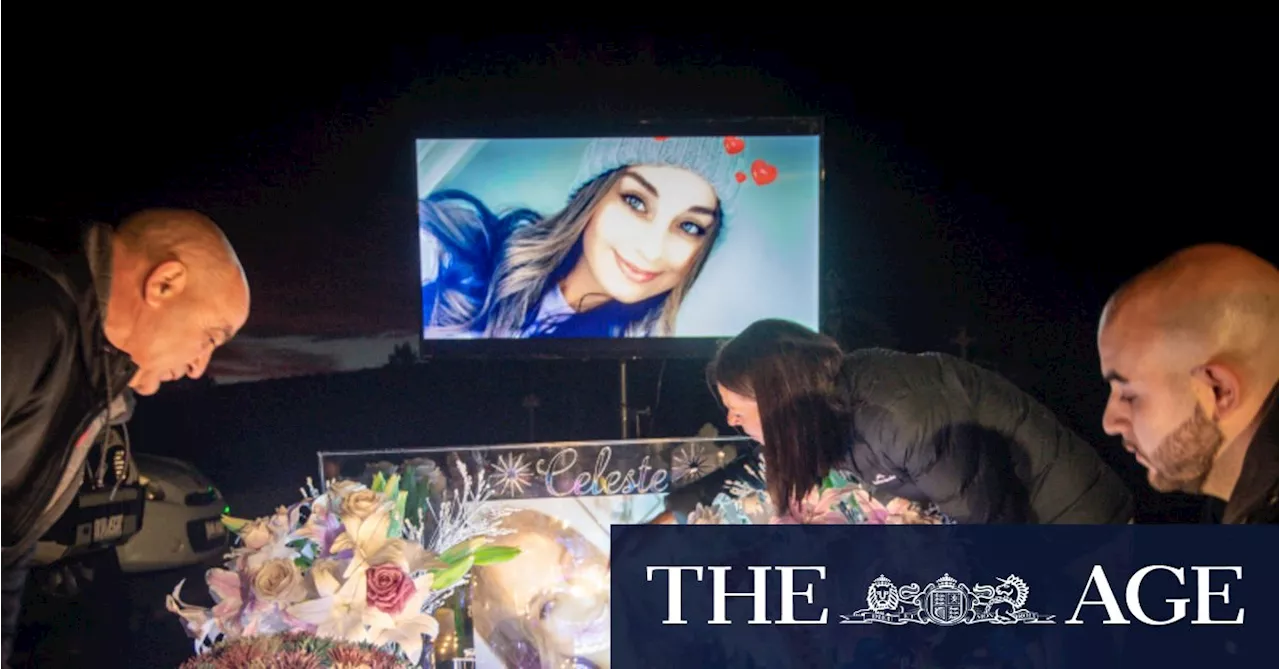Celeste Manno was murdered in her bed. Now her mother wants the world to hear her pain – and to save others.
Add articles to your saved list and come back to them any time.At the bottom of a ridge of green, undulating hills on Melbourne’s outskirts, Aggie Di Mauro sits quietly on a fold-out chair. In front of her is the grave of her eldest child and only daughter, Celeste.
“Every day she’d come up to me, wrap her arms around me, and I’d wrap mine around that tiny little waist of hers, and we’d kiss each other good morning.”There are few pictures of them together – Aggie has never liked being photographed – but her favourite shows them beaming, arms around each other, Celeste mid-laugh as her mother smiles down the lens of the camera.
Celeste escorted him from the building on his last day. She was professional and polite. Over dinner that night, she was embarrassed and uncomfortable as she told her family that when she extended her hand to wish Sako all the best, he had kissed her on the cheek.Advertisement . Aggie claims the desk officer didn’t read the majority of the messages or log the visit, telling them a crime hadn’t been committed, and advising her daughter to block Sako and consider getting off social media.Several months later, on July 1, 2020, they returned, armed with a manilla folder filled with print-outs of messages received over the year. This time, Aggie says, police seemed to take them more seriously.
The same psychiatrist would later opine that it was now that Sako began to oscillate between an intense love and hatred of Celeste, as he realised that his fantasy he was not attainable. “He had obviously made a decision that he couldn’t live with her being happy and going on without him … and he decided to rectify that,” he says.
A forensic psychiatrist who diagnosed Sako with an extreme personality disorder, Dr Rajan Darjee, said Sako faked psychotic symptoms to attract sympathy.Sako also tried to persuade psychiatrists he was eligible for the mental impairment defence, using wording similar to the criteria used to assess people for the special defence during one session with Darjee.
“He spent three years trying to weave his way through the legal system,” says Aggie. “Being in court facing the demon that took my daughter away from me was the most challenging experience in my life, other than the night she was killed.”Simone Fox Koob Aggie says her first few discussions with the state government seemed fruitful and she was told all the report’s recommendations would be swiftly implemented.“I wanted answers,” she says. “They said ‘we will look at what needs to change’.”
Symes and the acting chair of the commission Jennifer Coate both said this conclusion had been reached on the available research, and the position could change if future expert evidence showed it was an appropriate tool. The report also found that the offence of stalking – which carries a maximum jail term of 10 years in Victoria – was not often used by police, as it was complex and not easy to prosecute. Instead, it was often easier to charge offenders with other, more commonly used offences. It recommended making the offence clearer so that it can be more easily understood.
So many personal safety intervention orders are issued, she says, that it’s difficult for police to have an appropriate response when they are breached. While McEwan notes homicide is a rare outcome in stalking cases, there are lessons from Celeste’s case.
